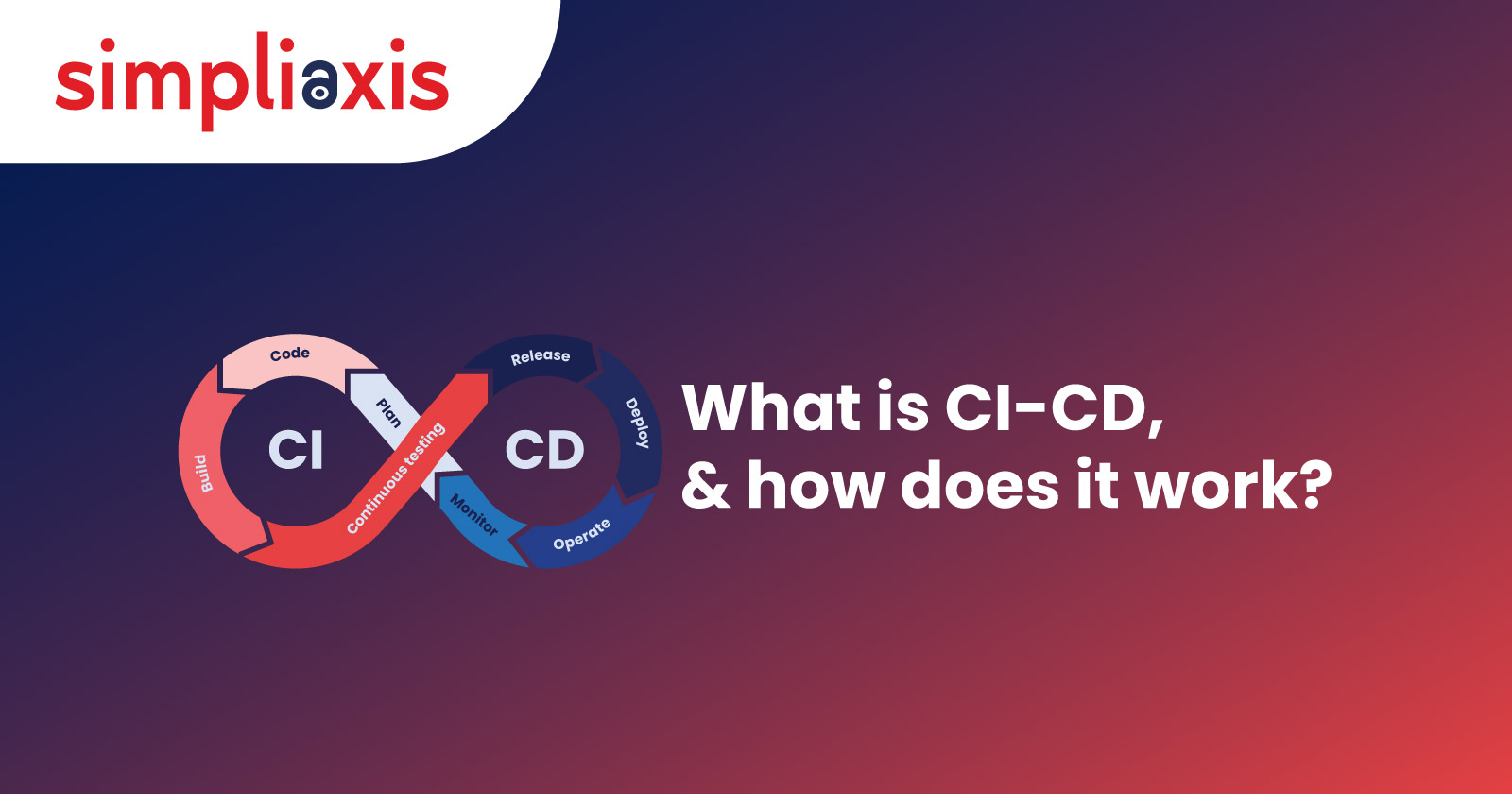When we design an application to solve modern-day problems for any enterprise, we come across new requirements over the course of the application's development. In this case, we should not break the application functionality which was designed earlier and need to implement solutions for the new requirements gathered which is a Continuous Process in which we are able to release frequent updates for that application with high code quality and this is achieved in DevOps through CI/CD.
What is CI-CD in DevOps:
The acronym CI-CD stands for Continuous Integration – Continuous Delivery. Continuous integration (CI) and Continuous Delivery (CD) constitute a set of principles and practices that enable application development teams to deliver code changes more frequently and consistently and deploy it to production.
CI/CD is also one of the best practices of Agile methodology where it follows an iterative approach as it allows Development teams to focus on meeting business requirements, code quality, and application security.
Continuous Integration (CI) is a process where developers working as a team for any single application will merge the code to a central repository preferably GitHub or Bitbucket may be once or multiple times in a day. It represents the steps required to automate the build and packaging of the software. Each integration will be verified by automated tests run by build servers, which enables us to detect errors faster and locate them because code changes committed by a specific developer are typically smaller. The result of Continuous Integration is Artifact which can be deployed and from this step the role of Continuous Delivery kicks in.
Continuous Delivery (CD) represents infrastructure support for code deployment into Production. We need to make sure that the artifact has all the configuration required to move to production. CD automates the deployment of applications to multiple environments, such as Development and Testing environments, in addition to Production. With the help of CD, we can push the changes to multiple environments automatically.
Also, check: Why Devops is important
CI/CD Pipeline:
A CI/CD Pipeline is a series of steps that define the ability to take source code to production. It is a practice focused on improving software delivery using either a DevOps or SRE approach. The pipeline can be triggered whenever a code change or new artifact is present in the artifact repository.
A typical CI/CD pipeline includes the following stages:
Build – Application Code is developed by Developers using Version control tools and software project management such as Maven
Test – The application needs to be tested by the quality assurance team, whether functional or regression testing. Automation tools such as Selenium can save time and effort for testers
Release – Developers deliver the application code to the repository i.e., moving the code to the master branch.
Deploy – Application code is moved to production
Security and Compliance– Quality Assurance (QA) validates build based on OWASP requirements. QA team performs Penetration testing using tools such as Burp Suite to test the Application Security
Benefits of CI/CD:
Automated testing helps us to achieve continuous delivery, which ensures software quality and security and increases the profitability of code in production
CI/CD pipelines create a shorter time to develop new product features to put ourselves on page with Client requirements
Automation refrains team members from repetitive tasks and helps them to focus on developing new things
This pipeline helps us to push the approved code changes to multiple environments simultaneously
This reduces the risk of code changes through small, incremental updates by minimizing the effect that bugs can have on the application
How to write a CI-CD pipeline?
Jenkins is one of the available open-source software tools for writing a CI-CD pipeline that helps achieve continuous integration in an automated build and test process. Jenkins is written in Java which is used widely by many developers around the world. Jenkins can be used many times in a day for building and testing code. Code is deployed by Jenkins after every successful build and test. Jenkins can be referred to as a remote control where the desired build is triggered upon clicking the button. Software libraries APIs can add Jenkins as the plug-in.
How does CI/CD works?
Many developers will work on any application simultaneously. Once Unit testing is done from their side they are ready to merge the code changes. The merge process requires approval from Technical Consultant as it may break functionality that was designed earlier. This causes developers to roll back their merged code or work for long hours on bug fixes. This CI/CD working process can be divided into 2 phases – The continuous Integration phase and the Continuous Delivery phase.
Continuous Integration phase:
This helps developers to merge and test code frequently may be multiple times in a day. CI phase follows the steps as below:
- Developer clones code from the central repository then creates local branch to work on it for new feature or code enhancement
- Once the required code changes are complete, the developer commits it to the central repository using GIT
- The Continuous Integration server determines what changes have been made and launches to build and test the application, confirming that the changes didn’t cause a functional break.
- The application is built to check the bugs using automation scripts written by the Build and Deployment team. The test cases written focus on functionality (Functional testing) to ensure that no functionality of the application is broken.
The development team is notified of the test results. In the case of a build failure, the team will know that the newly committed code caused the application to break and can begin to fix the issue. If the build is successful, the team moves on to the continuous delivery phase.
Continuous Delivery phase:
After thorough testing, teams can move to the continuous delivery phase. The delivery of code must be triggered manually by the Deployment team may be from GitLab, but the rest of the process is entirely automatic. All necessary interaction with web servers, databases, and other services is done if you trigger the CD pipeline which executes the script.
One way to trigger a deployment is to use a YAML configuration file through GitLab. As the CD pipeline depends on CI an attribute is added to ensure this CD pipeline should run after CI.
Conclusion:
We can conclude that Code quality is improved when CI/CD is used and software updates are released with no application break. The impact of any release can be gathered from the DevOps team and data from the respective release can be planned for the next Sprint.
Simpliaxis offers DevOps Foundation® Certification Training, providing comprehensive knowledge and practical skills in implementing effective DevOps practices, including CI/CD, to ensure seamless application development and deployment.
















